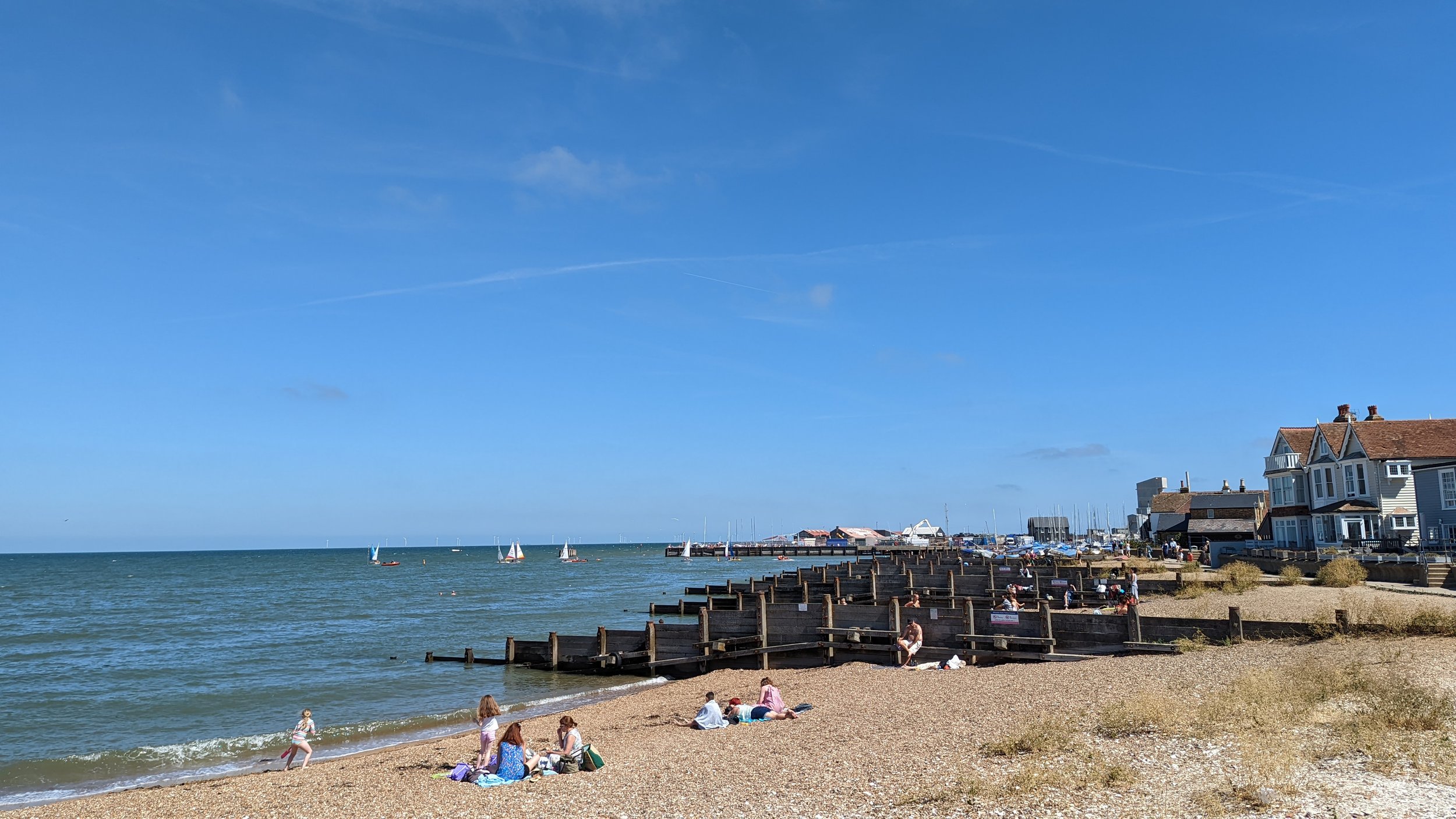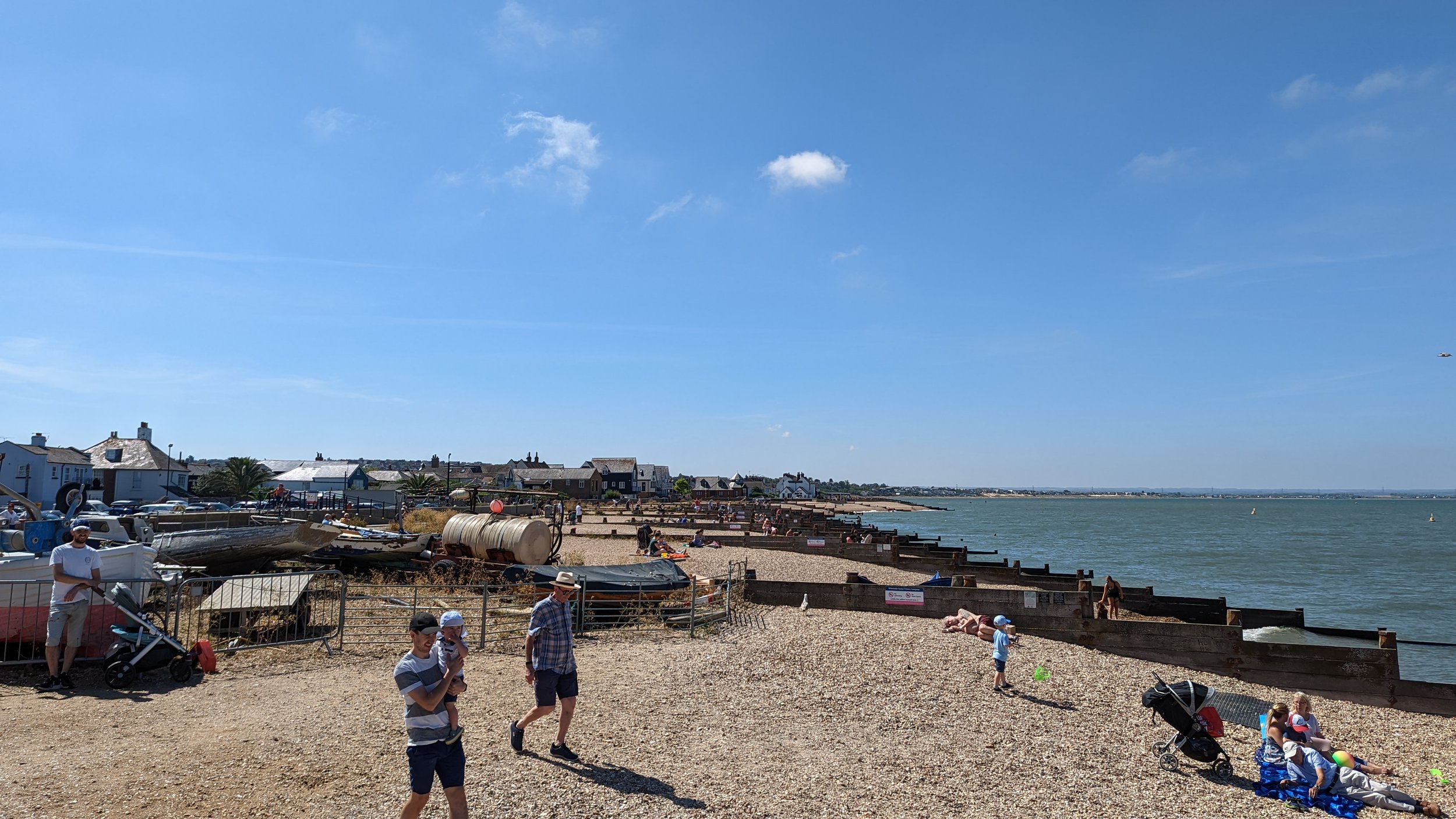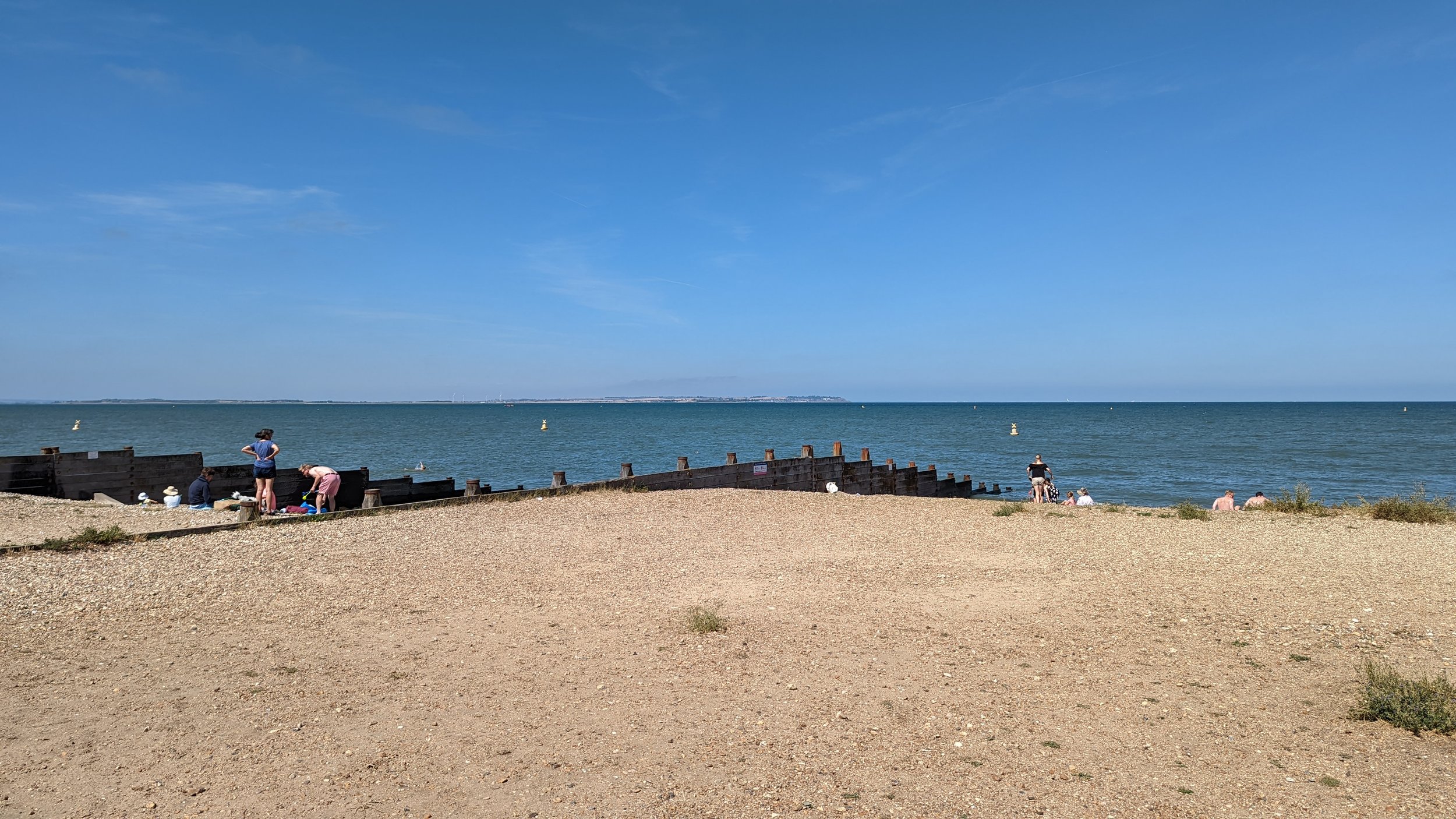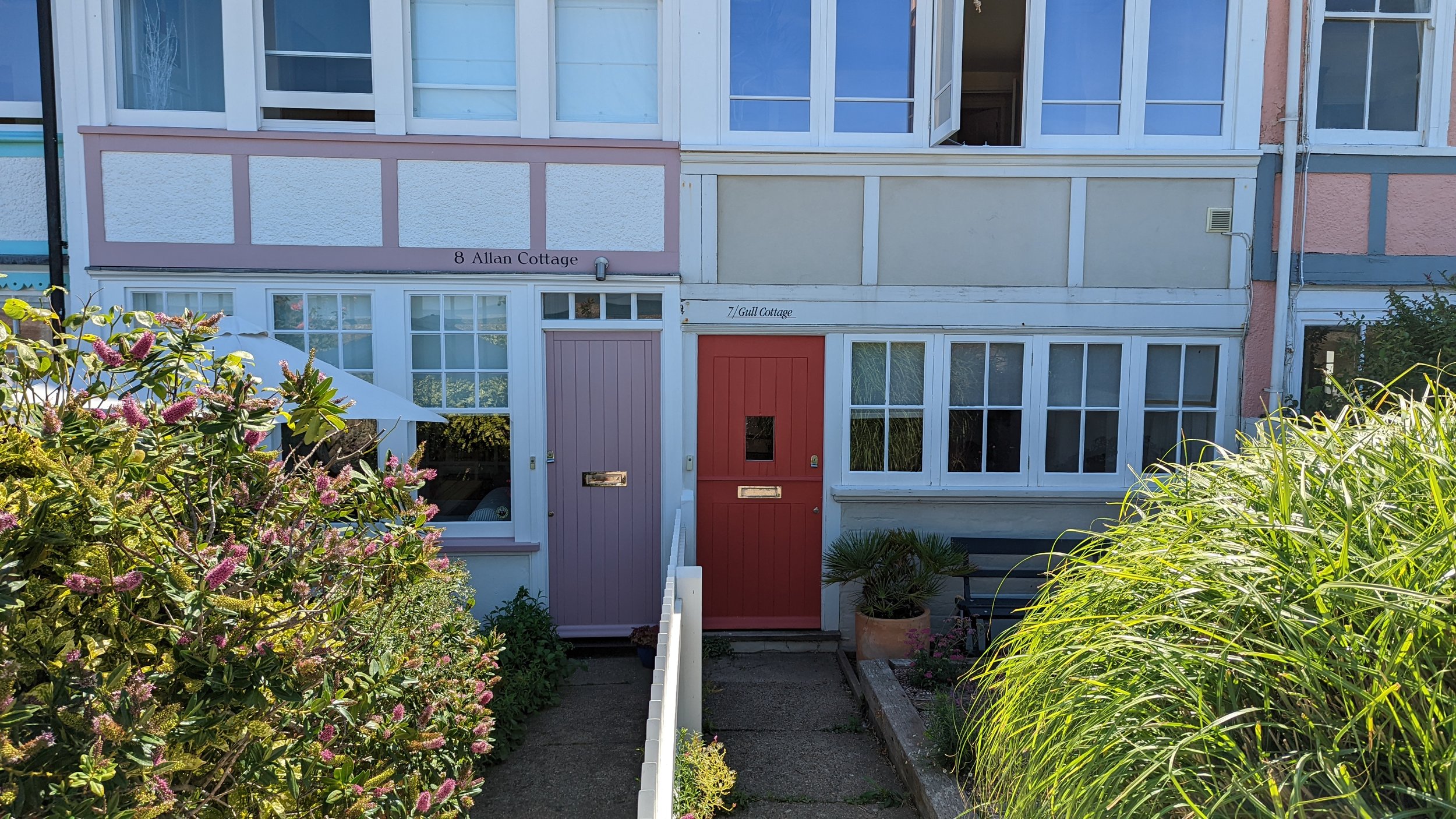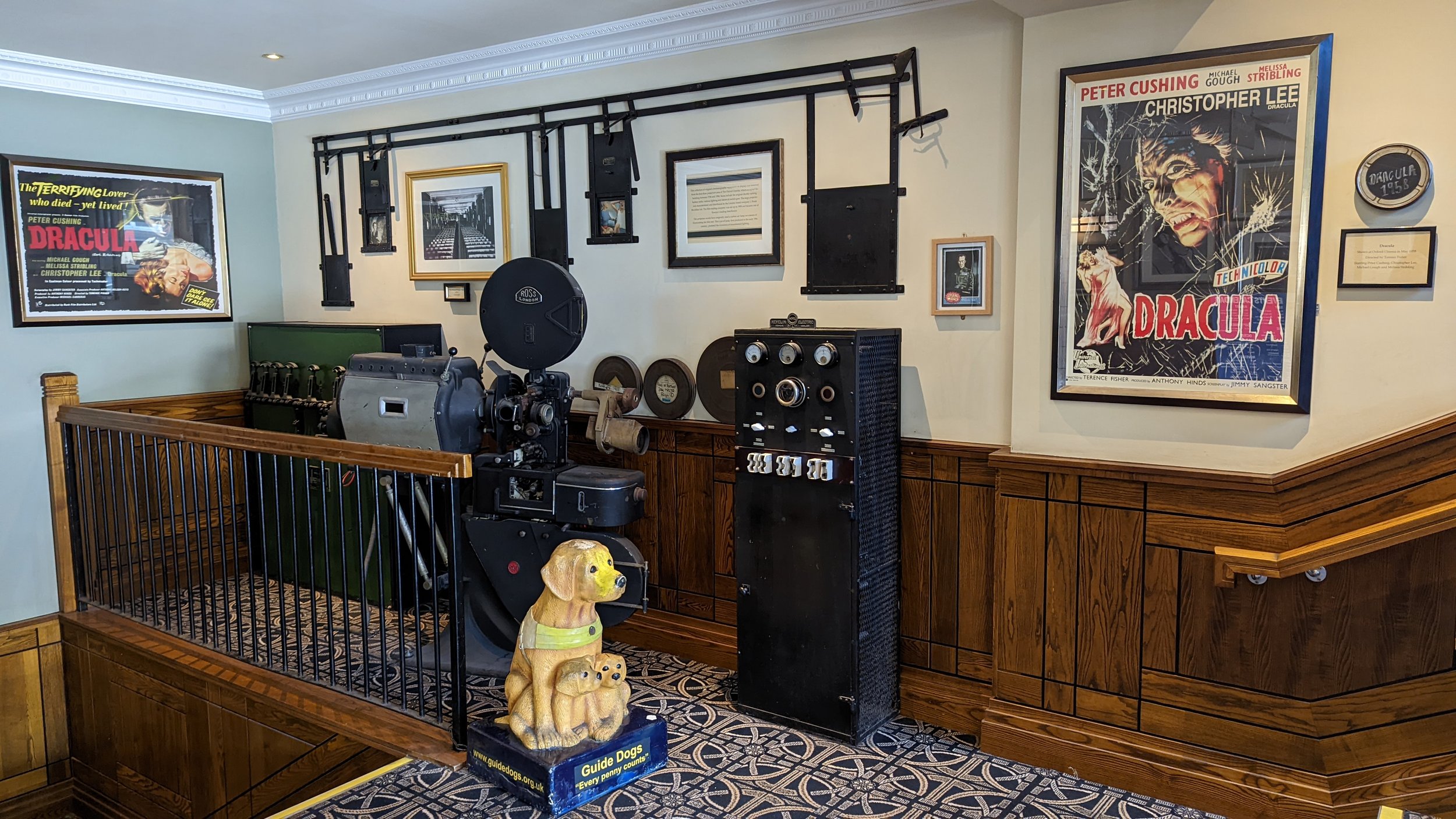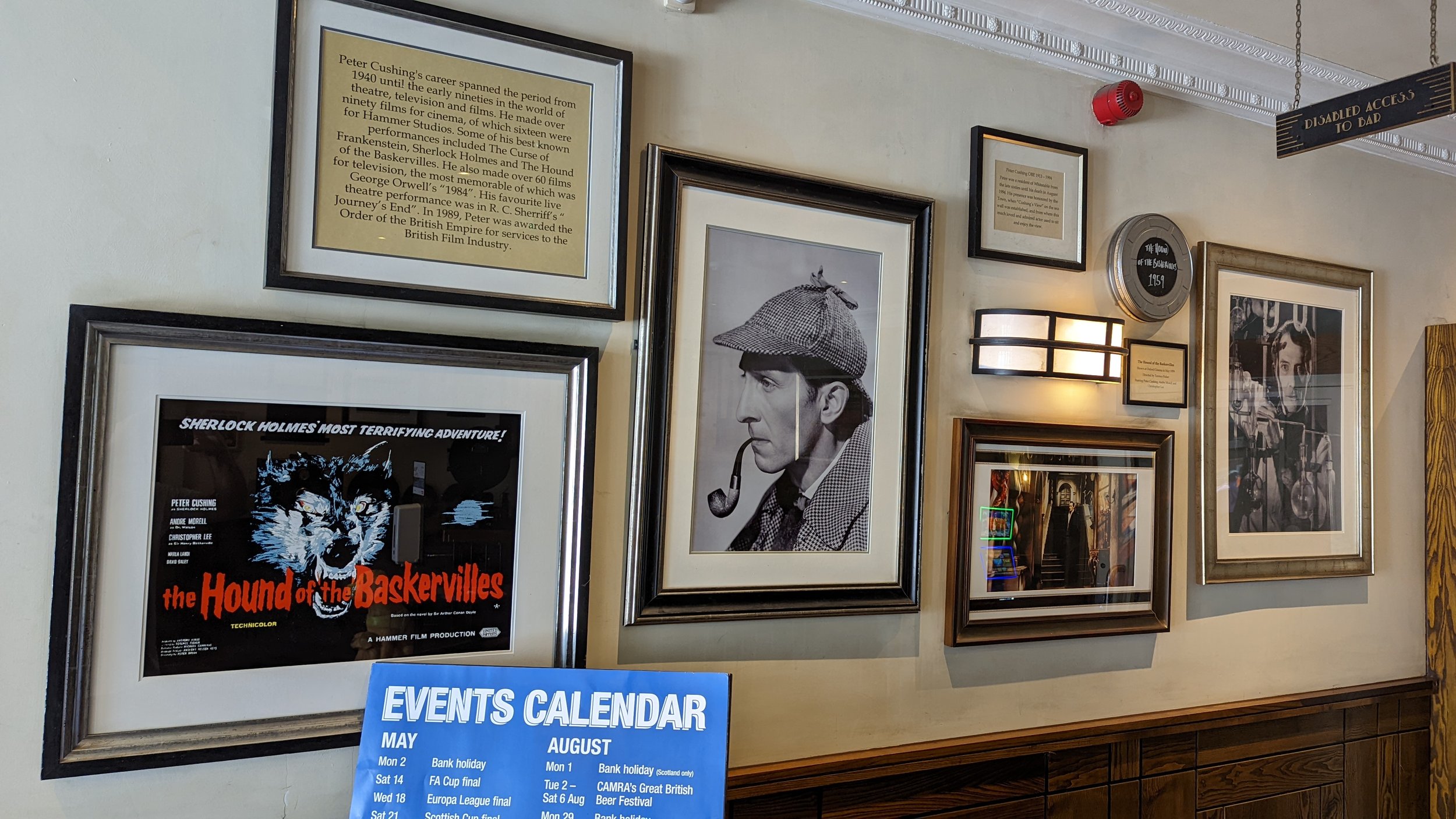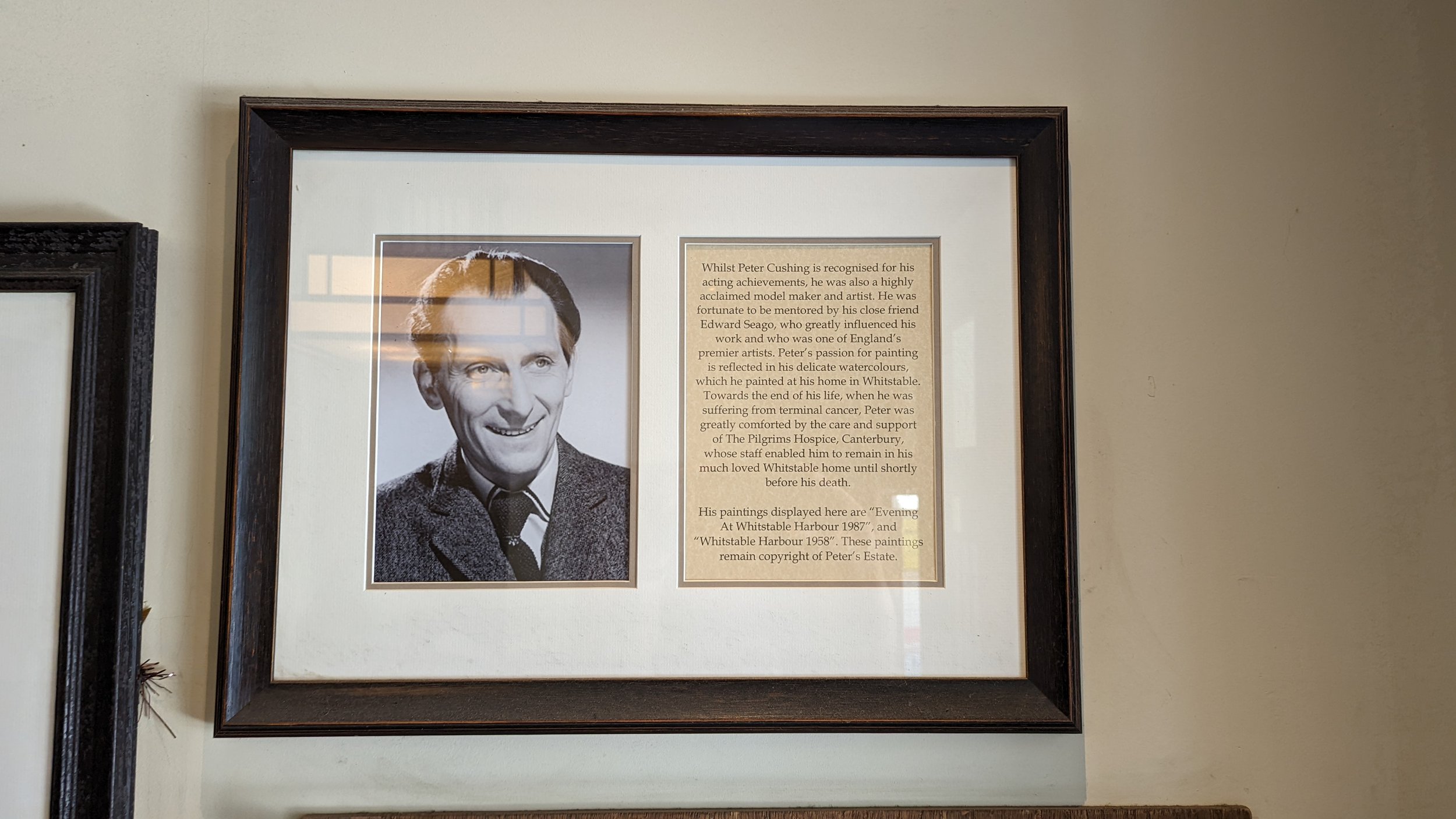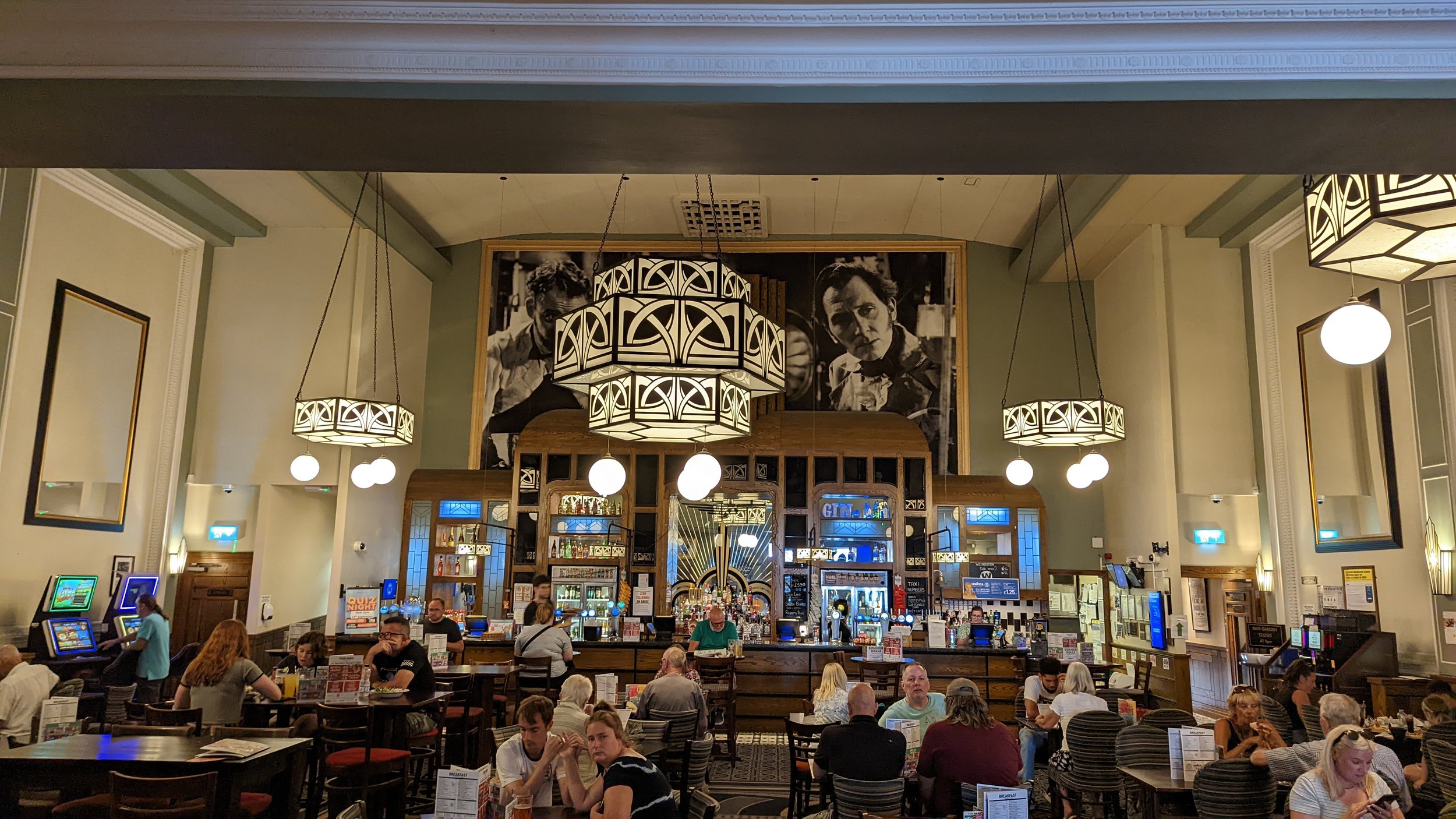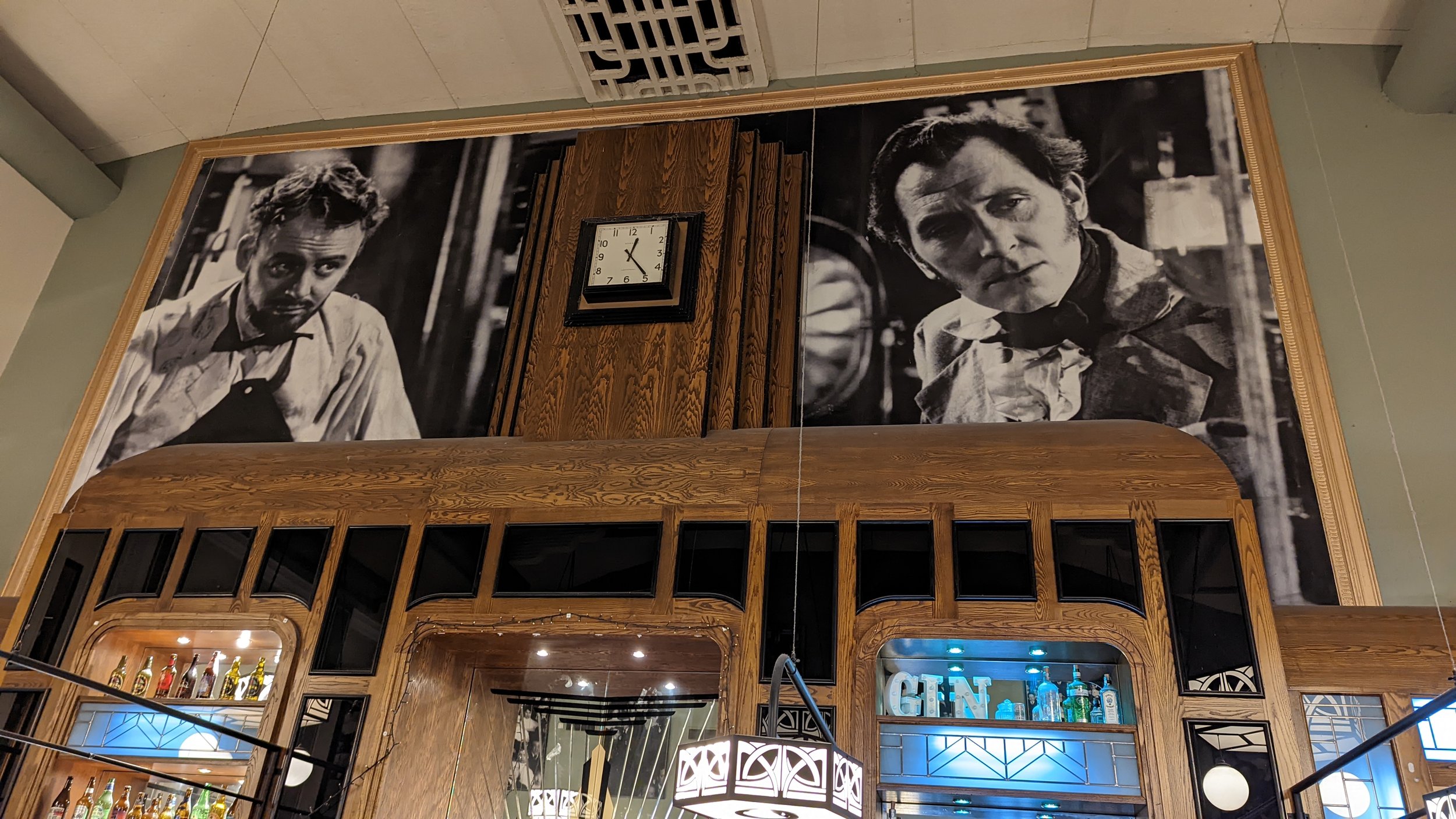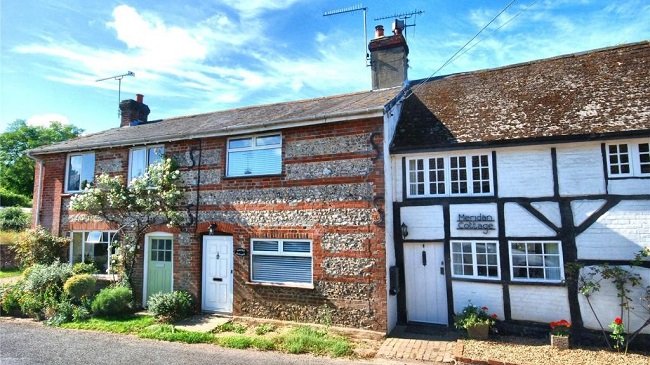Whitstable
To my surprise I found myself out and about today undertaking another day trip. This time we headed back to the sea and visited Whitstable, a town on the north coast of Kent adjoining the Greater Thames Estuary. It’s 5 miles (8 kilometres) north of Canterbury and 2 miles (3 kilometres) west of Herne Bay. The town was originally recorded in the Domesday Book of 1086, under the name Witenestaple, meaning "the meeting place of the white post", a reference to a local landmark. By the late middle ages Whitstable had become a centre of Thames Estuary fishing, specifically for oysters. Today, the main activities at the harbour are fishing and processing, cargo handling and boat maintenance. The town has shingle/sandy beaches adjacent to the harbour, where swimming and water sports are popular. Whitstable Castle is situated on the border of Whitstable and off the coast is Kentish Flats offshore wind farm, consisting of 30 wind turbines.
There’s plenty to do and see in Whitstable. You can soak up the local history, peruse the quaint coastal streets and shops, or look in the estate agents windows and scream at the property prices. There are lots of traditional and brightly painted guest houses along the beachfront affording easy access to the shingle shoreline. Sailing and other activities are popular and as this is a working fishing town, the harbour is busy. If you’re looking specifically for culture, there are several art galleries supporting local artists as well as the Playhouse Theatre. There are a wide range of restaurants and bars to choose from. Being a fishing town many specialise in seafood with oysters being a locally sourced delicacy. There are numerous car parks strategically placed in the town centre and on its outskirts making local amenities very accessible. Overall Whitstable is well maintained and presented, exuding what is known as “British charm”.
However, despite all of these attractions, one of the reasons for our visit today was to pay homage to one of Whitstable’s greatest residents. Peter Cushing lived in the town for over 30 years. The actor originally visited Whitstable in the 1940s and two decades later bought a house for weekend use, which he later permanently lived in until his death in 1994. Cushing and his wife, Helen, loved Whitstable and were well known around town. A local beauty spot, near the High Street, has been named Cushing’s View. There is a Blue Plaque on one of the seaside cottages marking where they lived. Furthermore, there is a Wetherspoons pub in Oxford Street in the South West of town named after the actor. The Peter Cushing is a former music hall and cinema that has been converted into a themed “public house”. So naturally, Mrs P and I felt obliged to pay a visit and raise a glass to the man himself.
The Peter Cushing pub has turned the main entrance of this former theatre into a terrace for eating and drinking. The lobby is filled with movie memorabilia including vintage projectors and lighting equipment. The walls are adorned with posters for such films as The Hound of the Baskervilles (1959) and information about the famous Hammer studios star. There are also several paintings by Peter Cushing himself on display. Stepping through the lobby into the main seating area, I was struck by the opulent art deco design, bright chandeliers and the wainscoting. Above the bar there are images from The Curse of Frankenstein (1957) further Peter Cushing and Hammer themed artwork and paraphernalia around the walls. The entire area is beautifully air conditioned. It’s a far cry from some of the more contemporary Wetherspoons pubs I’ve visited recently and the theme is most certainly not just a gimmick.
We spent a pleasant morning and early afternoon in the town but left before 3:00 PM because the heat was building and the weather was becoming oppressive. Whitstable offers a more sedate alternative to traditional seaside resorts on the Southern coast of England, which tend to be more commercial and noisy. Whitstable exudes a picture postcard charm and will suit those who want a more leisurely pace. However, if you are visiting especially to dine in one of the local restaurants that specialise in seafood, you may wish to book in advance as they are a major attraction in themselves, especially when specific seafood is in season. Sadly, we did not do this and the restaurant we wanted to dine at couldn’t accommodate us until later afternoon. However, we found an alternative place to eat and so there was no major inconvenience. I look forward to returning to Whitstable possibly for a longer holiday, as it affords convenient access to Herne Bay, Canterbury and Broadstairs


